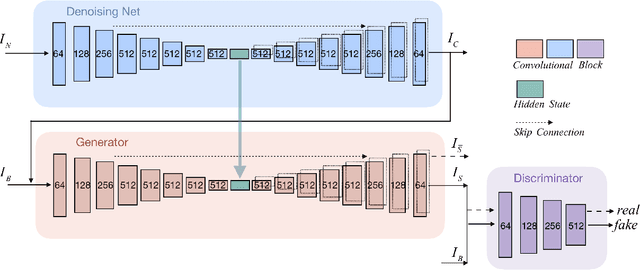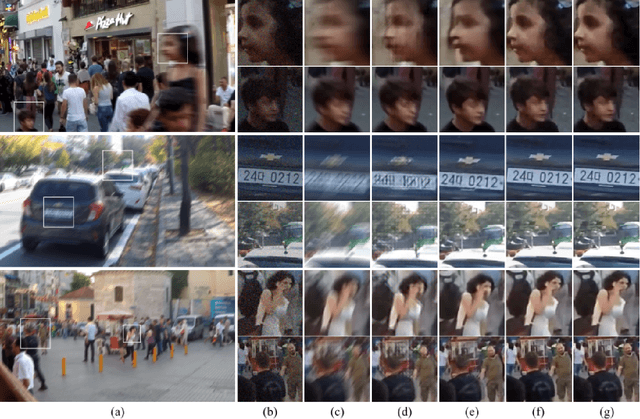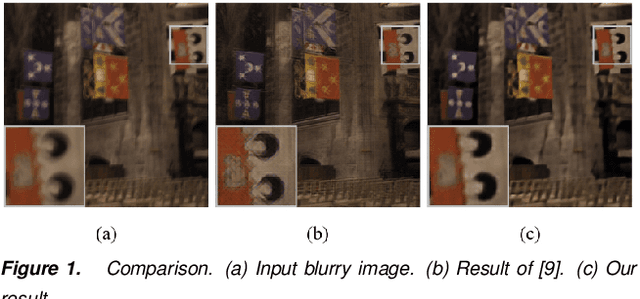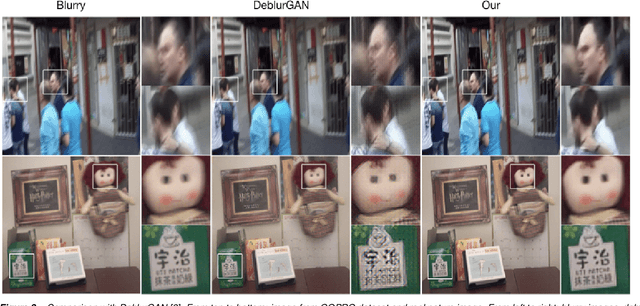Robert L. Stevenson
Deep Motion Blur Removal Using Noisy/Blurry Image Pairs
Nov 25, 2019



Abstract:Removing spatially variant motion blur from a blurry image is a challenging problem as blur sources are complicated and difficult to model accurately. Recent progress in deep neural networks suggests that kernel free single image deblurring can be efficiently performed, but questions about deblurring performance persist. Thus, we propose to restore a sharp image by fusing a pair of noisy/blurry images captured in a burst. Two neural network structures, DeblurRNN and DeblurMerger, are presented to exploit the pair of images in a sequential manner or parallel manner. To boost the training, gradient loss, adversarial loss and spectral normalization are leveraged. The training dataset that consists of pairs of noisy/blurry images and the corresponding ground truth sharp image is synthesized based on the benchmark dataset GOPRO. We evaluated the trained networks on a variety of synthetic datasets and real image pairs. The results demonstrate that the proposed approach outperforms the state-of-the-art both qualitatively and quantitatively.
GAN Based Image Deblurring Using Dark Channel Prior
Feb 28, 2019


Abstract:A conditional general adversarial network (GAN) is proposed for image deblurring problem. It is tailored for image deblurring instead of just applying GAN on the deblurring problem. Motivated by that, dark channel prior is carefully picked to be incorporated into the loss function for network training. To make it more compatible with neuron networks, its original indifferentiable form is discarded and L2 norm is adopted instead. On both synthetic datasets and noisy natural images, the proposed network shows improved deblurring performance and robustness to image noise qualitatively and quantitatively. Additionally, compared to the existing end-to-end deblurring networks, our network structure is light-weight, which ensures less training and testing time.
 Add to Chrome
Add to Chrome Add to Firefox
Add to Firefox Add to Edge
Add to Edge